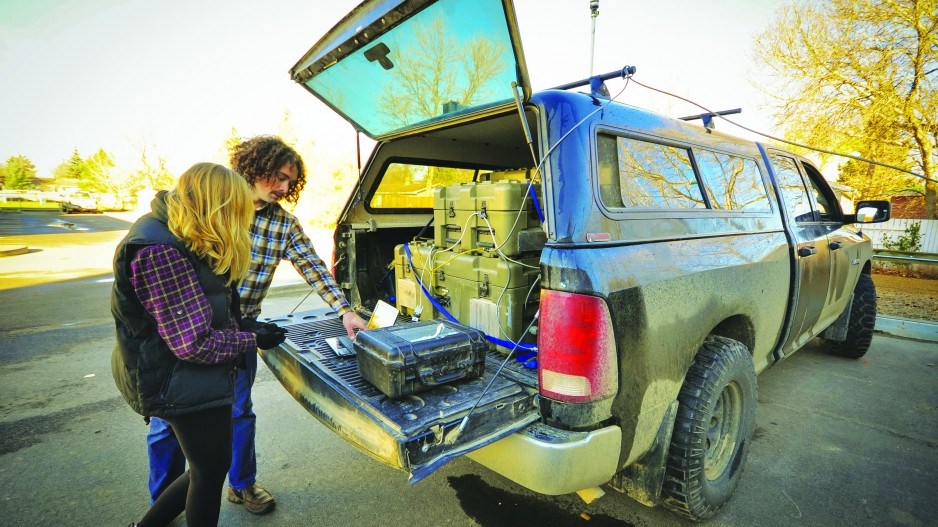A recent resurgence of natural gas well drilling in northeastern B.C. may be good for B.C.’s economy, but all those new wells will inevitably also mean an increase in methane emissions.
As a greenhouse gas, methane is shorter-lived than carbon dioxide, but, over a 20-year period, it has 85 times its ability to trap heat.
New federal regulations aimed at lowering methane in the oil and gas sector are expected to be introduced in the coming weeks. The target is a 45% reduction in methane by 2025, which is consistent with the B.C. government’s own plans for methane regulation.
Engineering fixes already exist to reduce fugitive emissions from wells, pipelines and valves in the sector’s collection and processing networks, although they’re not always used because they can be expensive.
“The solutions that are out there for fixing the problems are known, they’re used, there’s no mystery there,” said Duncan Kenyon, director of the responsible fossil fuels program for the Pembina Institute. “We’re still at that stage where it hasn’t gotten enough acceptance.”
One of the biggest problems to date in addressing methane leaks is that they can be difficult to measure. Methane occurs naturally, so it can be difficult to determine with existing sensor technology if high methane levels are coming from a leaky gas well or a nearby cattle ranch.
The difficulty with methane detection isn’t so much a hardware problem as a software problem. Fortunately, there’s now an app for that.
Actually, it’s not just software – the detector relies on a four-foot-wide sensor that mounts in the back of a pickup truck – but the application, which analyzes air composition, GPS positions, wind speed and direction, is the real breakthrough.
Altus Group, a Toronto real estate services company, recently acquired exclusive rights to a mobile methane-sensing technology developed at St. Francis Xavier University in Nova Scotia.
The technology, called Emissions Attribution via Computational Techniques (ExACT), can be mounted in a truck and driven around oil and gas fields and other gas infrastructure to take readings of several types of gases, including methane.
“Every second it’s taking a measurement,” said Ryan Maloney, branch manager for Altus’ geomatics division.
The software can identify and adjust for the naturally occurring background methane to pinpoint where leaks may be coming from.
“It’s a service we can provide our existing clients, as well as new clients, that helps them understand where they’re at already, because a lot of them don’t necessarily have a firm grasp on that,” Maloney said. “And sooner or later, they’re going to be forced to understand and be able to quantify or pay the price.”
Although it may seem odd for a real estate services company to be delving into technology that will mostly be used in the oil and gas industry, Maloney points out that one of the company’s areas of specialization is geomatics, which is the collection and analysis of geospatial data.
“We have an inherent expertise in spatial data collection, spatial data management and analysis, so the addition of this gas sampling was kind of in addition to our spatial data collection that we’re already doing,” Maloney said.
The ExACT sensor has been used to test methane levels in oil and gas fields in B.C., Alberta, Saskatchewan, Eastern Canada and the U.S.
“A lot of the leaks that we have found are kind of expected, around tankage, or drilling, service rig incidents – that sort of activity,” Maloney said. “Persistent leaking has been very, very small and it’s also very regional, depending on the type of infrastructure, the individual operators themselves and the formations they’re producing from.”
In B.C. it has been used by a non-governmental organization, Maloney said. Once new methane regulations come into effect, Maloney expects government regulators will be using it a lot more to start establishing baseline data.
Methane constitutes 15% of Canada’s total greenhouse gases, with the oil and gas sector accounting for 43% of that.




